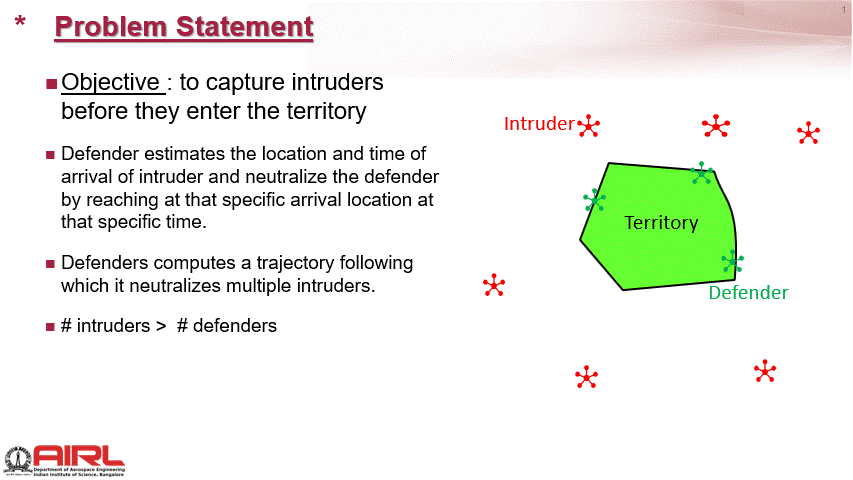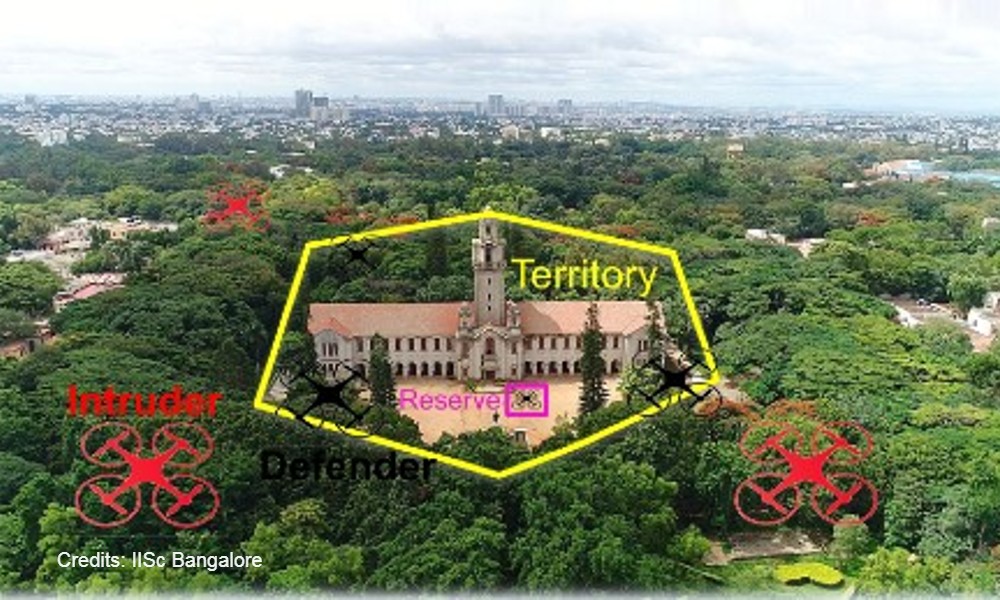Researchers say that several limitations of existing counter-drone ideas can be resolved by DREAM.
Researchers in the Department of Aerospace Engineering at the Indian Institute of Science (IISc) have developed a novel approach called Dynamic Resource Allocation with decentralised Multi-task Assignment (DREAM) to safeguard airspace and infrastructure from intruding drones.
Suresh Sundaram, Associate Professor in the Department of Aerospace Engineering and the co-developer of the project said that the DREAM approach has several advantages over the existing techniques for safeguarding airspaces. It uses drones in real-life situations when the trespassing drones are more in number and unpredictable.
“In real life, the numbers of targets are dynamic in nature and the location and time on which they are coming also changes. So we have to use minimum resources for the maximum protection of the location,” Prof. Suresh said.
The researchers resort to a mathematical modelling strategy in which the drones intruding on a protected space are called intruders, and the drones deployed to defend and neutralise the intruders within a territory are called defenders.
In DREAM, the defenders can capture multiple intruders by estimating the time and location of their arrival. Only the required number of defenders is used for this, and the rest are kept at reserve stations and will be used whenever the number of intruders is beyond the capacity of the given defender team.
Prof. Suresh Sundaram also said that the recent attack at an Air Force station in Jammu with drones which were carrying explosives showed that it is necessary to protect airspaces.

The Ministry of Civil Aviation on February 11, 2022, removed the requirement of a drone pilot license for flying drones. Now, a Remote Pilot Certificate (RPC) issued by a drone school approved by the Directorate General of Civil Aviation (DGCA) is required. Also, for operating a Nano-unmanned aircraft system (weighing less than 250 grams) or a Micro-unmanned aircraft system (weighing more than 250 grams, but less than or equal to 2 kilograms) that is used for non-commercial purposes no RPC is required.
Dinakar Devireddy, who heads the Drone Pilot Trainings and Services at the Telangana State Aviation Academy, said that India does not have a proper anti-drone facility to protect their airspace from drone attacks and the authorities are very much concerned about this. The challenges faced are that a similar and uniform system has to be deployed in every airport in the country. “The government is thinking about how the cheapest and scalable technology can be networked to all the airports of the country. They had a lot of demonstrations from anti-drone companies and are in the process of finding the right technology to deploy, but as of now, that’s a big security threat,” he said.
Ashish, owner, and co-founder of Equinox’s drones, a Bangalore-based aerospace company that manufactures drones said that a micro-embedded chip has been installed in the drones and it defines the range of the Global Positioning System (GPS) which restricts drones from entering a border of five kilometre (km) premises of protected airspace like airport, or defence areas. It has been restricted to the parameters of such zones.
Shridhar Velhal, a Ph.D. student at the IISc said that “Research communities now require the same or more number of defenders than intruders, and it results in more allocation of resources. But DREAM addresses this issue.”
Prof. Suresh Sundaram added that “There is no permanent ban on any services as the way DREAM works is temporal. So we will be letting other services operate and we are planning on the commercial aspects of the idea for deploying it in industries like airports, oil refineries, dams, power stations, dams and for defence purposes.”



